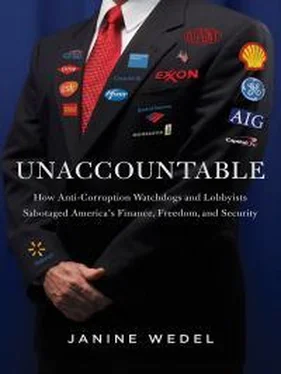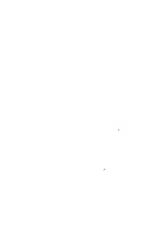Both bureaucrat and client sit in the dark, at the mercy of new information technologies that live in an accountability-free no-man’s-land that no one can totally manage. Where is the accountability in the automated phone tree, the customer chat line, and other inventions that take on a life of their own?
The result of these silo-ized units awash in bits and bytes is that my local Bank of America branch and Carol in Ohio likely know less about who in their organization can solve my problem than the communist bureaucrats I encountered idling away in organizations very far from Weber’s ideal. Carol and my local branch manager, while eager to help, are even smaller cogs in the wheel and less able to assist than their equivalents under a pre-digital communist system.
I, the client, have far less room to creatively maneuver—to interact to my advantage—in this digital netherworld. And when an actual person in a bureaucracy, albeit one on the phone, is eventually pinned down, s/he is primarily responsible to the checklist, not to the client/customer, as was the case with Weber’s bureaucracy, however differently it may work in practice as compared to its own theory of itself. Weber’s bureaucrat was responsible for solving the client’s problem, following through with letters, meetings, court appearances, or other procedures. By contrast, Carol in Ohio is no doubt evaluated (and promoted) not by whether she actually solves customers’ problems but by whether she completes the prescribed checklist and says the right things in the right way to me and others who course through her call center.
This is not Carol’s fault. The very means of assessing accountability—of judging whether someone is doing a good job—is to blame. As practiced nowadays, “accountability” is more about ticking off the boxes on a checklist of things to do and say than about solving a problem. So Carol performs for the checklist. Her job depends on it. To be favorably appraised by her bosses, she must showcase accountability, which may well diverge from actually achieving it.
This was not the case in the old world when a local prospective home buyer met face to face with a bank manager to secure a mortgage. Nor was it the case when, having faced the bureaucrat, the customer could point a finger at his incompetence, arrogance, or corruption. Today, a “kind of a silent moral coup has stripped the customer of his/her individuality altogether,” as an analyst of bureaucracy has observed. 6
Most of us have found ourselves in the grip of this twenty-first-century organizational behemoth at one time or another, whether battling an insurance company over a disputed claim or a bank over an uncommitted offense. But this unaccountable structure has proliferated far beyond the customer call center, with far more deleterious consequences.
Take, for example, the financial system. Think of the housing bubble in the United States in the 2000s that helped precipitate the 2008 financial crisis. Under the assumption that home prices would continue to rise and thereby alleviate the risk of bad loans, mortgage loans were packaged and repackaged, with the value unknown, as traders reaped gains for every slice and dice, passing on damaged goods, no matter the consequences for the client individually and the public generally. Vast amounts of wealth were concentrated among Wall Street practitioners and high-flying investors while disaster awaited millions of others.
A number of scholars and analysts argue that such silo-ization writ large, use of jargon to obscure, and splintering of information facilitated the meltdown. Anthropologist Gillian Tett of the Financial Times interviewed bankers across financial capitals to try to make sense of how exotic derivatives evolved and proliferated. 7She elaborates on Wall Street “tribes” within a single firm, and how the derivatives tribe came to dominate: 8
Groups such as Citi or Merrill appear to have developed a more hierarchical pattern, in which the different business lines have existed like warring tribes, answerable only to the chief. Moreover, the most profitable tribe has invariably wielded the most power—and thus was untouchable and inscrutable to everyone else. Hence the fact that, in this tribal culture, nobody reined in the excesses. . . .
Information did not flow freely between divisions or among banks, Tett observed. Analysts in one unit often knew less than she did about what was happening in other units of the same bank. 9
Making a parallel point, William White, chairman of the Economic and Development Review Committee at the Organization for Economic Cooperation and Development in Paris, highlights “the complexity of operations and the interrelationships among firms.” One of the pre-crisis convictions of regulators and overseers upended by the crisis, he reflects, was the “belief that regulators, traditionally focused on the good health of individual institutions, actually had a good understanding of the health of the system as a whole.” 10Apparently, they did not.
Functionaries in such complex organizations, be they traders in complicated financial instruments or employees or contractors working in customer service, are incentivized to have a stake only in their own little cubicles, not in the larger outcome for the client or the public. The term “structured unaccountability” was coined by a team of sociologists to capture this very disconnect. After the collapse of Lehman Brothers, the iconic Wall Street firm that fell in the autumn of 2008, signaling the global financial crisis, the sociologists interviewed dozens of Swiss, German, and Austrian bankers (managers and employees from different departments and at different levels), who described how the industry had changed. It used to be that bankers were responsible for a borrower’s ability to pay back a loan. There came a point in the early part of this century, though, when they were no longer responsible for the results of their lending, only for doing deals—as many as possible. 11Bonuses were generally granted according to the volume of deals made, not necessarily the consequences of any given deal. True accountability was structured out of the equation. 12
Who is at fault? The answer is hardly satisfying. We tend to take on the ethics of our silos and professions, with their success becoming our focus, rather than the client/customer—or, more holistically, the larger results of our actions. Tett writes: 13
I know it’s very fashionable to think the bankers were trying to hoodwink the world. And yes, there probably were some bankers being greedy—maybe mad or evil too—but I think the vast majority of bankers were not any of these things. They wanted to get on and do their job and they simply didn’t have much incentive to challenge the system.
Like Bank of America’s Carol et al., rewarded for completing the checklist (sans a bigger picture), many on Wall Street and in corporate America have been rewarded for their short-term investment gains, or the volume of their deals, regardless of the deal or trade’s actual long-term merits or its effect on the parties to the deal, the firm, or the broader society or economy. 14Indeed, this was Goldman Sachs’s defense when hauled before Congress in 2010. Having shorted their own clients, “Goldman representatives accounted for themselves in the hearing not as advisers to clients, but as ‘market makers’; essentially as traders among traders,” writes anthropologist of finance Caitlin Zaloom. The problem for ordinary people is that these self-styled “market makers” have their own “moral apparatus, sets of responsibilities, and ideas of virtuous action.” 15The client is scarcely part of this picture.
Removed from the client, this new-style answerability often displaces old-fashioned professional ethics, as several scholars have shown. 16It is a poor substitute for both having a broad sense of what needs to be done and taking responsibility for doing it.
Читать дальше












